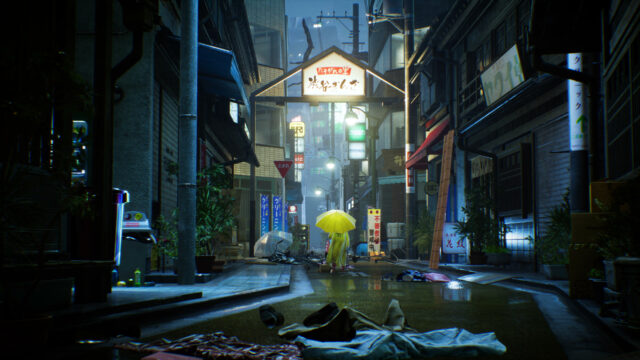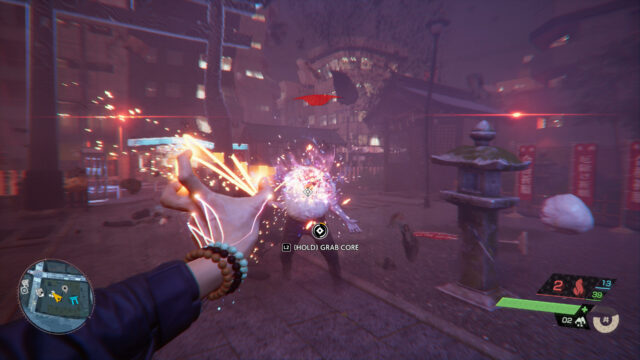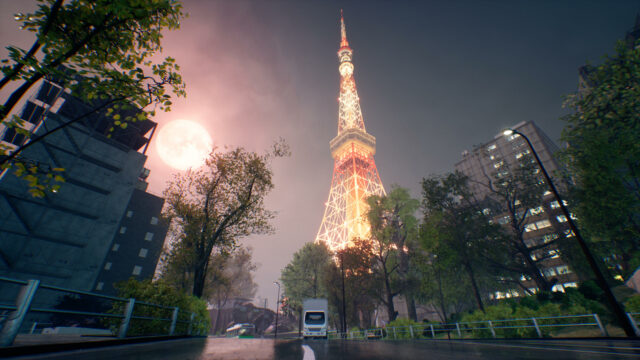Ghostwire: Tokyo Interview
Publisher Bethesda Softworks and developer Tango Gameworks’ Ghostwire: Tokyo arrives this week on PC and PlayStation 5, taking players to a supernatural, fog-filled Tokyo as its population disappears and Visitors from another world cross over. RPGamer was given the opportunity to talk about the game’s sound design with game’s composer Masatoshi Yanagi as well as director Kenji Kimura and producer Masato Kimura, with Bethesda’s Tadayuki Horie translating.
Alex Fuller (RPGamer): What were the main goals behind the soundtrack?
Masatoshi Yanagi (Composer, Tango Gameworks): I wanted to mix traditional Japanese sounds with modern sounds. So I used Japanese traditional instruments and combined them with a digital synthesizer and modern sounds, but also took samples of sounds from the city and collaged, mixed, and blended them together so that we could create the essence of the game within the soundtrack.
AF: What were some of the most challenging parts of the soundtrack to get right?
Yanagi-san: It was hard to find the right mix and balance between the Japanese traditional sounds and the digital synthesizing sounds. We wanted to mix them together and it sounds easy to do, but when you actually do it, it was really hard to make music combining those two things.
It may be the same for other people too, but after COVID hit, we had to start working from home. With more time to spend with my children, I had these loving moments with them and then had to work creating some dark music for a paranormal setting. That mental control switching between the two things was definitely a challenge.
AF: How much back and forth was there between the sound and production teams?
Yanagi-san: The soundtrack team was given a lot of creative freedom. There wasn’t much feedback needed unless there was something very off or wrong. Most of the time we were able to create whatever I had in mind freely. That was probably because we all had a similar goal in mind, and we were able to look at what kind of experience we wanted the player to feel. Since the music we created was going in the same direction, there likely wasn’t much need for a lot of feedback.
Masato Kimura (Producer, Tango Gameworks): There was communication in the form of normal chit-chat, and in that normal chit-chat there would be talk about sounds that we liked or some music that we liked!
Yanagi-san: Those would set the tone for the type of music that we would create. It really didn’t feel like an order was made and something needed to be done by a deadline. It was more of a free-form meeting through day-to-day conversations and a friendly back-and-forth.
AF: What were some of the inspirations behind the otherworldy sounds of the Visitors?
Yanagi-san: I didn’t do specific work on the enemy sound designs, but from the work I saw from the sound team, a lot of it was inspired by discussion about the background setting and information about each individual evil spirit.
Perhaps it looked like one character, but someone said might be interesting if this one character had multiple types of voices and if we tried those voices out and played them at the same time it could be very eerie and spooky so why don’t we try that out. Those kind of conversations were constantly ongoing, but they seemed to be stemmed from information about the background for each of those beings.
AF: How much of an impact did the DualSense controller capabilities have on the sound design?
Yanagi-san: The sound design is linked directly to the controller vibration. When you experience the hand action such as the ether shooting during combat, there’s a lot of rumble that your feel in your hands that’s also linked to the sound.
When you walk through city and it starts raining, you’ll feel rumble that’s also tied to the sound. We were very mindful to link that experience of the things you’re sensing with your hands with what would be heard through your ears. We wanted to link those two things together together so that it always felt fitting.
AF: Can you give some examples of the traditional Japanese instruments you used?
Yanagi-san: There are four that I can think of at the top of my head. There’s a wooden flute-like instrument called a shakuhachi. There are also the hichiriki and ryuteki that are two other woodwind instruments that are used in traditional Japanese music. Perscussion-wise there are suzu, Japanese bells that are used in rituals.
[Masato Kimura-san later showed an image of some of those traditional Japanese woodwind instruments, which also included the sho and nohkan.]
AF: Can you give an example of a favourite track or moment where sound plays a key role?
Yanagi-san: It’s hard, there are so many to choose from! In chapter two, when you first enter K.K.’s apartment, that’s one I like a lot.
AF: How do the character elements, such as K.K. and Akito’s partnership, play into the sound design?
Yanagi-san: We didn’t utilise anything that was directly linked to the characters’ relationships, but we did have a basic understanding of how the game would progress, such as how the two characters would butt heads with each other for a little bit as they’re new to each other and have different thing they want to do. But as they realise that they need each other and the relationship gets warmer as the story progresses. Knowing the outline of how that would overarching element would progress I was able to compose music that would be fitting for each phase, though not in a direct moment-to-moment situation.
AF: What are the inspirations for the sounds of some of the spirits such as the tengu?
Yanagi-san: Many of these are influenced by the yokai that we saw or were exposed to when growing up. This gives us a base knowledge of what it would look and sound like. With that memory we would use that as a starting point and then think what would that sound like if we apply our uniqueness and put it into the setting of a modern paranormal Tokyo.
AF: How challenging was it to create the soundscape of a deserted Tokyo?
Yanagi-san: Basically, we took the sounds that we hear in the city and tried to find out what it sounds like without the noises people were making. I then listened to that and tried to apply it to the game and the visuals, getting a sense of “would this work?”. Then if we felt it could be made better, we’d think about adding something or taking something out. It was a lot of trial and error, and iterating with adding or sometimes removing sounds.
AF: Are there any comments you have to players about what they should keep an ear out for?
Yanagi-san: The 3D audio is a big part of the experience and we hope that players check it out with that 3D experience. The game is designed so that immersion is a big key word so that players are immersed and almost enveloped and swimming in the Tokyo that we have created. The sound was designed to also let you feel that you surrounded with the sounds of Tokyo and we hope that players are able to experience this.
Kenji Kimura (Director, Tango Gameworks): The game is using paranormal Tokyo and expressing Tokyo in a very distinct way. The sound is a big part of the game and utilises the same vision, so is unique in the way we created the sounds for Tokyo and its fully immersible and entirely paranormal experience that makes players feel like they are visiting a different place. It’s very likely that we will release the soundtrack so once it comes out please check it out.
[Since the interview, the soundtrack has been made available to listen to in full on YouTube.]
RPGamer would like to express our deepest thanks to Masatoshi Yanagi, Kenji Kimura, Masato Kimura, and Tadayuki Horie for their time and for answering our questions, as well as to the team at Fortyseven Communications for facilitating the interview. Ghostwire: Tokyo launches for PC and PlayStation 5 on March 25, 2022. Those looking to read more about the game can check out RPGamer’s impression of its first two chapters, with a full review coming soon.









Recent Comments